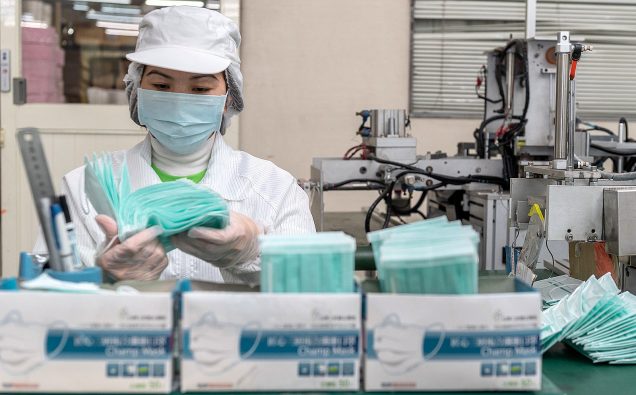
Since the outbreak of COVID-19, the use of face masks has become ubiquitous, and wearing it is widely considered a good easy preventive measure.
But masks come with a variety of protective layers like the highly advanced N 95 reusable mask, which filters out dust, and keeps even the smallest of particles away.
Scientists in the United States are also developing a technology that would see face masks light up when the wearers happen to be at place where coronavirus is detected in the air, and where practicing social distancing may not be possible.
The use of such masks may be more than just keeping the virus away until researchers invent a vaccine to foil the virus or the government make available fast-track ways to carry out mass tests to identify people that need to be socially isolated.
Researchers at Harvard and Massachusetts Institute of Technology (MIT) are fitting sensors inside the masks that would light up if they detect the presence of the virus from breathing, coughing or sneezing, according to a Business Insider report.
The technology was initially developed to detect the Ebola virus, but it is now being adapted to help deal with the ongoing COVID-19 pandemic.
If this method proven successful, it might close the gap in screening methods, including temperature checks of people at public places.

A man mid-sneeze Image: James Gathany / Public domain
“As we open up our transit system, you could envision it being used in airports as we go through security, as we wait to get on a plane,’ researcher Jim Collins told The Business Insider.
“You or I could use it on the way to and from work. Hospitals could use it for patient as they come in or wait in the waiting room as pre-screen of who’s infected.”
Since testing errors and delays have slowed many countries attempts to control COVID-19, the importance of such technology, when available, could be a great help in combating the outbreak.
According to scientists, lab’s project is at an early stages now, but results have been promising. As per the report, the team aims to demonstrate the concept in the next few weeks.
The news story explains that the sensors consist of DNA and RNA that bind to a virus and is freeze-dried onto the fabric using a machine called Lyophilizer. The machine sucks the moisture out of the genetic material without killing it, giving the mask a months-long shelf life.
The sensor detects moisture and a virus genetic sequence. the sensor requires a small quantity to spot the virus. Once it detects, it gives out a fluorescent signal that is not visible to the naked eye but can be measured by a device called fluorimeter, the report says.
The lab’s aspirational goal, Collins says, is to begin manufacturing masks for public distribution by the end of summer. “Right now, we are time -constrained and talent-constrained in that we have got a relatively small team,” Collins said.
If developed with effective demonstrations, medical experts say, it could be one of the many helpful tools that the world needs to combat the global pandemic.
While the race against time is on for development of the vaccine and availability of mass testing ability, the realization of the mask that may warn wearers of the presence of the virus could be a great help.


















